 Features
Features

Ballerina Ngô Thụy Tố Như, who performed in her first solo show at the HCM City Opera House last week, has been on a three-decade journey to promote ballet in Việt Nam. Thu Mai reports.
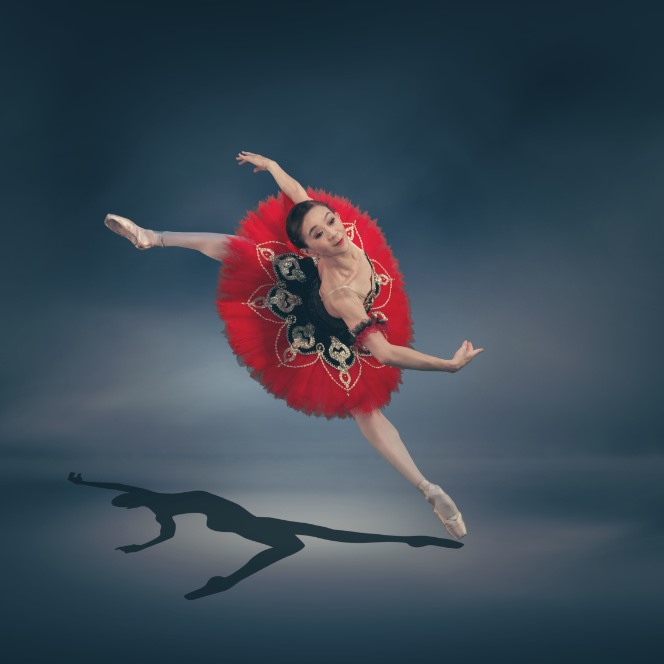 |
| On a swirl: Ballerina Ngô Thụy Tố Như. Photo courtesy of Arabesque Company |
Ballerina Ngô Thụy Tố Như, who performed in her first solo show at the HCM City Opera House last week, has been on a three-decade journey to promote ballet in Việt Nam. Thu Mai reports.
For two months, Như practised several hours a day for her performance in the show The Ballerina, marking her love of and devotion to ballet.
The show at the HCM City Opera House featured excerpts from the ballets Don Quixote and Paquita, as well as a solo performance titled The Ballerina and a contemporary dance Cho và Nhận (Giving and Receiving), based on Vietnamese folk art.
While Don Quixote and Paquita brought Như fame at home and abroad, the ballets, especially choreographed for Như, The Ballerina and Giving and Receiving had their premiere on the Vietnamese stage last week in HCM City.
For the excerpts from Don Quixote and Paquita, Như danced with her long-time colleague, Meritorious Artist Thái Đạt Minh.
In The Ballerina, the dancer, dressed in a red pancake tutu, looked like a small bird flying bravely toward the sun, performing her turnouts, with legs rotated outward, beautifully.
In Giving and Receiving, a song of youth and love, Như performed with young artists from the Arabesque troupe from HCM City, a private dance company which combines traditional and contemporary dance.
While the more than 2,000-strong audience were enraptured by the performance, many local youth remain unimpressed with the art from.
“Ballet is not popular with young people and dancers face difficulties to stage their work,” said Bùi Thị Nhung of the HCM City School of Dance. “However, after The Ballerina, I think Như and her colleagues may have planted a seed in the heart of younger guests who may grow to love ballet.”
The show’s choreographer Nguyễn Ngọc Anh, a graduate of the Hong Kong Art School, who now works in the UK, agreed. “Như danced as if the world would end tomorrow.”
Anh and his partner, choreographer Nguyễn Tấn Lộc, who is director of Arabesque, spent four years working on The Ballerina, to honour Như, their idol.
“Như is talented and devoted. She can dance anywhere and anytime she wants. And no one, no event can limit her passion for dance," said Lộc, a graduate of the Tokyo-based Fujisato Ballet School. “Như is an inspiration for all dancers.”
Born to a traditional family, Như’s love for ballet began when she was a child. When she was five, she studied with professional dancers at the HCM City Cultural House for Children.
In 1984, she was sent to study classical ballet at the Kiev State Ballet School in Ukraine.
“I spent nine years at the school. Ballet requires mental and physical strength. I worked like a soldier to improve my skills,” Như, one of the country’s very few professional ballet dancers, said in an interview with local media before the show at the Opera House.
After her studies, she returned to HCM City in 1993 and worked for the Tháng 10 (October) Ballet Troupe, the city’s first private dance troupe led by dancer and choreographer Trần Văn Lai.
Như and her six colleagues laid the foundation for ballet in HCM City. They introduced their art by staging popular excerpts from the classical ballets Swan Lake and Don Quixote.
“Ballet was a new field in Việt Nam in the 1980s and 1990s. My colleagues and I devoted our youth to bring dance to Vietnamese. I’ll never forget my tears and sweat streaming down on the stage where Tháng 10 Ballet Troupe performed,” Như said.
Some of Như’s peers turned to theatre, films and fashion after the ballet troupe closed in 2003. Their dream of ballet had ended.
“I felt very sad, but I didn’t want to give up. I knew that I would face challenges and sacrifices to pursue my career,” she said.
Như later received a scholarship to study at Bates College in Lewiston, Maine in the US. Her course focused on modern repertory, the singing body, jazz technique and yoga.
“The trip to Lewiston made me feel very proud of my work. I’m a Vietnamese dancer and I worked very confidently next to my foreign peers who had better working conditions than I did," she said.
She said her studies taught her many different aspects of dancing, but she also recognised that ballet was her true love.
"I’m proud to have performed many dances, but only in ballet did I find myself. I hope our dancers can introduce the art to Vietnamese."
Unlike other talented dancers such as Hoàng Châu and Phúc Hùng from the HCM City Ballet Symphony Orchestra and Opera (HBSO), Như works as a freelance dancer.
She is the principal dancer in many programmes at home and abroad, including dances such as Khoảnh Khắc Mùa Xuân (The Moment of Spring) and Carmen, directed by experienced choreographers such as Kim Quy and Hoàng Phi Long.
She spends time training students and children at the city’s School of Dance and Cultural House for Children.
“Through my art, I hope to impart my love for ballet to young people,” said Như, who has created dance works for children that combine traditional and modern styles.
She loves teaching as she can continue dancing while giving instruction. "I want to follow my Vietnamese and foreign teachers’ footsteps, teaching and leading the little ones to become professional ballet dancers in the future.”
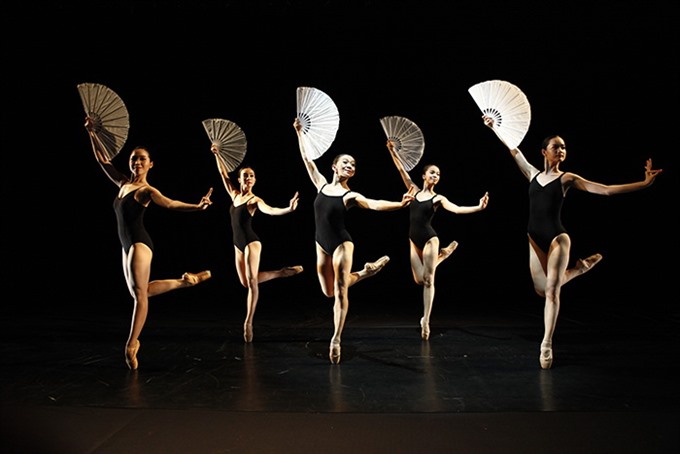 |
| It’s a breeze: Dancer Như (centre) and Arabesque dancers. Photo courtesy of Arabesque Company |
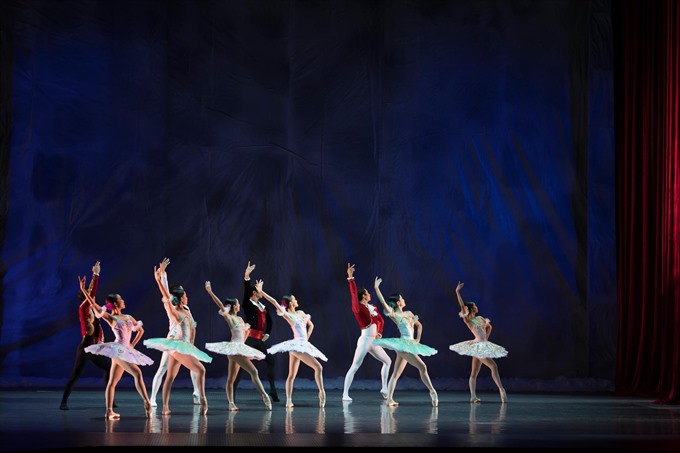 |
| Lined up: Young dancers of the Arabesque troupe perform in pancake tutus in The Ballerina. Photo courtesy of Arabesque Company |
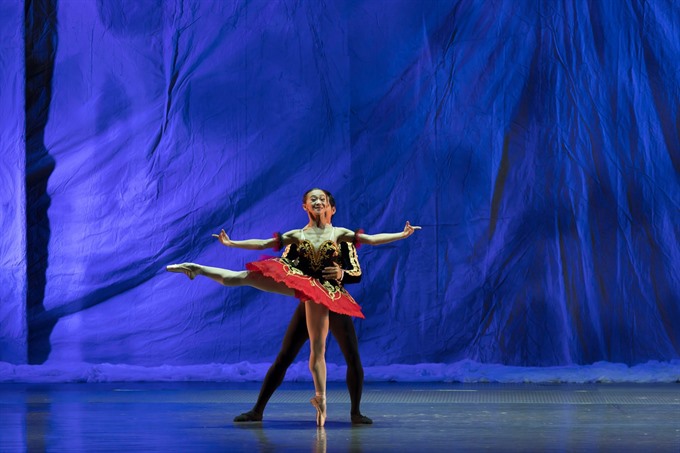 |
| Graceful: Như in the Ballerina. Photo courtesy of Arabesque Company |
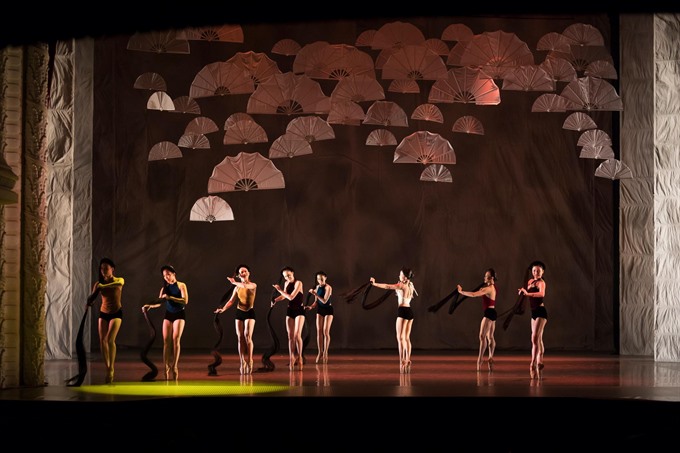 |
| Blending in: In Cho và Nhận, a production choreographed by Nguyễn Ngọc Anh, Như combines classical ballet and contemporary dance. Photo courtesy of Arabesque Company |
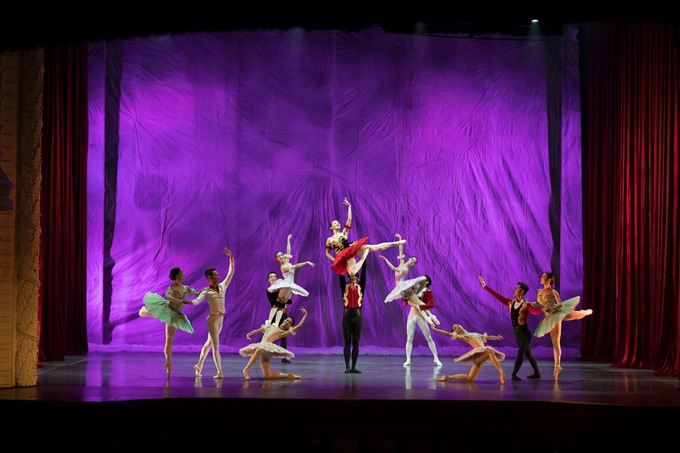 |
| Symmetry: Dancer Như and her colleagues from the Arabesque Company. Photo courtesy of Arabesque Company |
Arabesque troupe
During her journey, Như, as a lone swan, finally found Arabesque to share her passion
“It’s very simple,” she said. “The dancers in Arabesque work hard to contribute to the development of Việt Nam’s dance community.”
For The Ballerina, Như received huge support from Arabesque, most notablely choreographer Anh.
Như said she had to have surgery before the performance. “I thought my age and health might limit my dance, but the Arabesque dancers inspired me,” she said.
In Giving and Receiving, Như and dancers, with their long, black long hair, showed off the beauty of ballet and contemporary dance. Their performance proved that ballet could be delivered from the older to younger generation.
Established in 2009, the Arabesque troupe includes 20 professional dancers, including Thanh Phương of the Folkwang University of the Arts in Germany, Ngọc Khải of the Rotterdam Dance Academy in the Netherlands, and Văn Thịnh of the Fukuoka School of Music and Dance College.
The troupe toured Cambodia, Singapore, South Korea, Japan, Italy, the UK, and the US.
One of their most frequently performed dances is The Mist, a production choreographed by the company’s director Lộc and starring Như and Anh, two featured dancers of the Arabesque troupe.
The 75-minute show includes seven acts: Ra Đồng (On the Field), Hương Chùa (Fragrance from Pagoda), Mùa (Season), Đêm (Night), Được Mùa (Bumper Harvest), Lụa (Silk) and Gạo (Rice). It depicts the daily activities of southern farmers.
The Mist’s first 20-minute version premiered at the Daegu Modern Dance Festival in South Korea in 2011.
Three years later, it was staged in St Louis, Washington DC, Birmingham and San Diego following an invitation from Center Stage, a programme produced by the New England Foundation for the Arts for the US Department of State’s Bureau of Educational and Cultural Affairs.
“Through The Mist, audiences learned about Việt Nam’s wet-rice civilisation, with beautiful images of farmers rowing boats on rivers, singing and talking while working in fields together,” the show’s choreographer Lộc told Việt Nam News.
"I like performing folk and modern dances choreographed by Lộc and Anh. Their works encourage dancers to show their talent,” said Như, adding that she believes Arabesque artists will take Vietnamese dance to new heights.
Việt Nam has around 50 professional dancers, most of whom work for State-owned art troupes in Hà Nội and HCM City.
People’s Artist Trần Kim Quy, deputy chairwoman of the Việt Nam Dancers Association, said the industry was facing a shortage of professional dancers and choreographers, while skilled artists such as Như, Phúc Hùng and Phúc Hải of the HBSO are aging.
Dancer and choreographer Quy concedes that singing and acting in films can be lucrative, but a dancing career does not bring the same level of earnings.
“All Vietnamese dancers have had to make sacrifices for their careers. Như and her colleagues from Arabesque are persistent. Their love for dance can open doors to future success," she said. — VNS




